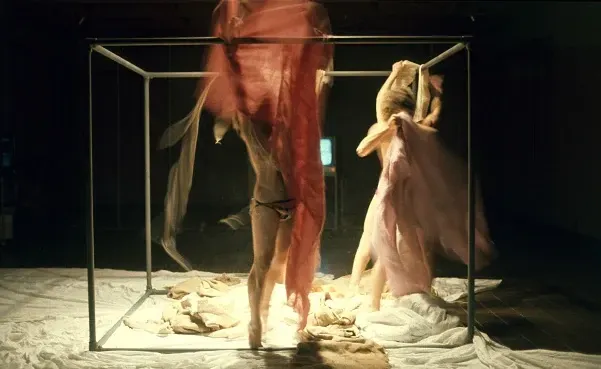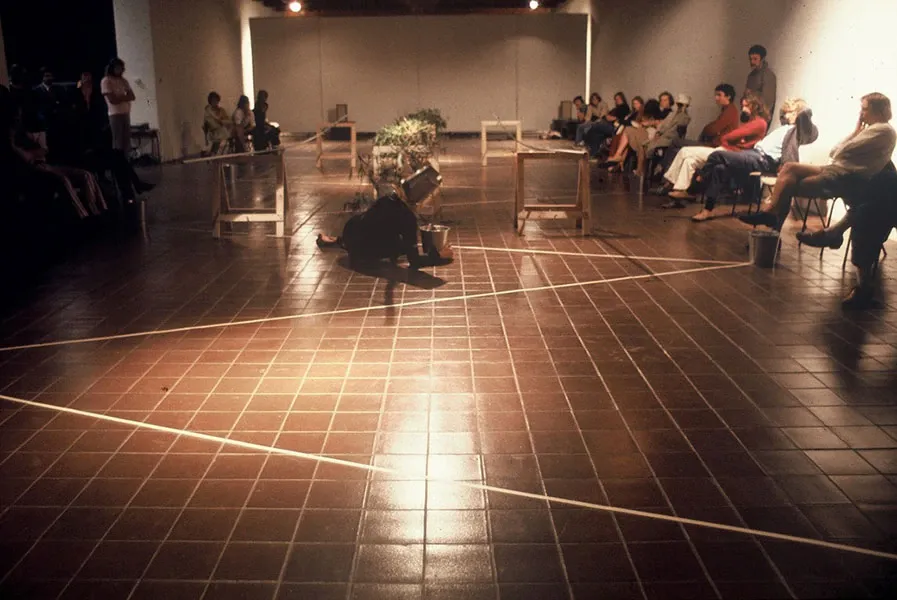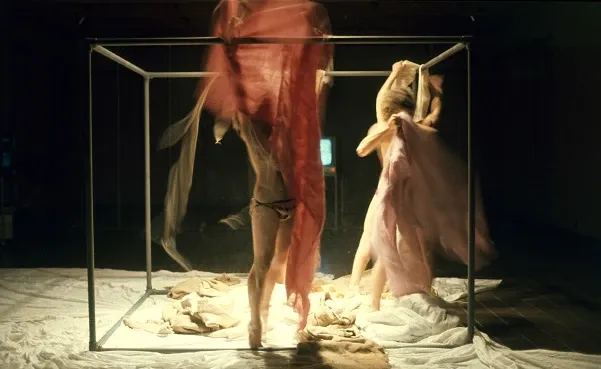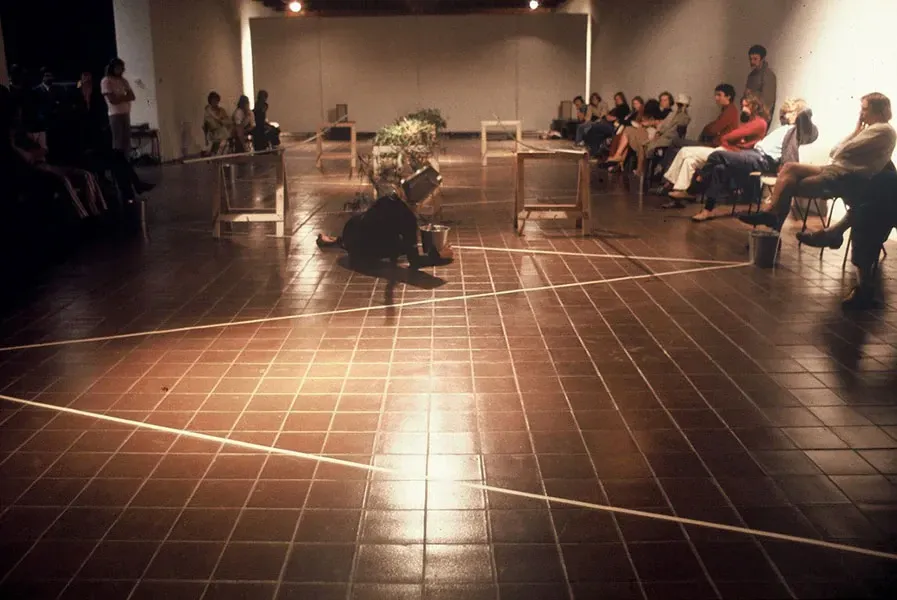Tough Crowd: Groundswell and the challenge of balance
Written by

From the outset, writing a review about Auckland Art Gallery’s latest exhibition Groundswell: Avant-Garde Auckland 1971 – 1979 was going to be a challenge. At its heart was the influence of artist and teacher Jim Allen, who cultivated a relationship between Elam School of Fine Arts and Auckland Art Gallery. Using a then-radical teaching style where the barriers between teacher and student were dissolved, Allen and a handful of enthusiastic students brought concept and performance art to Auckland and to New Zealand.
Groundswell is an important and necessary exhibition. Over nine rooms it sheds light on a forgotten and misunderstood medium utilised during a vital period of New Zealand art history. Conceptual and performance art emerged out of the United States during the 1960s as a reaction against Clement Greenberg’s militant infatuation with artwork produced on a canvas. The concept of art was ripped off the walls, thrown out of the gallery and danced in the street. Sculpture, the most solid and permanent medium became as fleeting as the human body mid performance. It was pieced together together from everyday life, from detritus gathered from rapidly expanding cities. Both mediums utilised video and other new technology.
To capture the feeling of a breathless revolution, Groundswell merges archival footage, sculpture, video and installation from 17 artists. There will also be restagings of four major 1974 performances Jim Allen, Bruce Barber, Philip Dadson and Kieran Lyons through collaborations with a new generation of artists.

Traditionally, both conceptual and performance art have had a bad rap in the public’s consciousness: it can reinforce the idea that art is solely the domain of a select few who have the prerequisite knowledge sanctified by a tertiary provider. It’s the butt of all jokes; the excuse given by Shia Labeouf when he put a bag on his head. In short, it’s a hard thing for curators to make palatable for their audience.
Conceptual and performance art (are) a hard thing for curators to make palatable for their audience.
Broadly speaking, you will find two audiences at Groundswell. The first group comprises of people within the art world who actively seek this exhibition out - enthusiasts, collectors, practising artists, academics, perhaps the odd dealer. They are a dedicated, small and finite audience anywhere in the world, but especially here in Aotearoa with our small population. The second, much larger group are those who will stumble across it. Given the complicated nature of its subject, a good exhibition will strike a balance between these two audiences and in order to provide a balanced review it is important to consider both of them.
Those already familiar with performance or conceptual art will enjoy unpacking this richly layered exhibition and how it has shaped New Zealand’s art history. While watching footage of Nicholas Spill’s Yves Klein-esque The rich must get rich so the poor can get poorer, I overhead a woman with an American drawl stage whisper to her companion “We were doing this in the ‘60s, they were well behind the times.” I had to swallow a smile, because they were right: at that stage of our history, we were at least ten years behind the international avant garde scene. This offhand comment by a stranger gave me permission to see Groundswell from a completely different lens which I had been trying to avoid. Each piece became imbued with a sense of angst, of jostling for approval from an art scene half a world away. Conceptual art is supposed to be engaged with the stuff of everyday life and this art was, albeit in an unexpected way.
Conceptual art is supposed to be engaged with the stuff of everyday life and this art was, albeit in an unexpected way.
Many of the pieces reflect a nation struggling to assert its own identity on the world stage (artistically and otherwise) so it relied on highbrowed mimicry. This is not a bad thing. The artworks themselves are sound and bring a (then) new way of thinking and artistic practice to the fore, while capturing the growing pains of our country’s creatives. Rightly, these begin to ebb in the final half of the exhibition with Fiona Clarke’s series of photographs embracing local identity and global inspiration with confidence.

But what about those who don’t have an Art History qualification?
Providing a viewer with information that gets straight to the heart of a piece of concept art without overwhelming them is a fine balance. At times, the wall text on display in Groundswell can veer into artspeak, making the art it is describing difficult to see. However, there is a robust series of programmes and tours on offer at the gallery which hopefully aid the understanding that concept art is not about art that has a concept. Rather it is about questioning the concept of art. Of pushing the boundaries of what art is. Different people will understand this concept in different ways and not only is that okay, it is vitally important that it is encouraged.
Concept art is not about art that has a concept.
The art of Groundswell needs to be digested, to be sat with and contemplated. Coupled with the fact that there are so many video works, it was baffling that there were so few seats available throughout the exhibition. Understandably, this affected how viewers interacted with the work. I witnessed fleeting engagements with many of the art works, which doesn’t do the reputation of performance or conceptual art any favours: as I moved around the exhibition, people’s brows got increasingly furrowed in confusion (something that perhaps could have been prevented by being offered a space to meditate on what they were seeing?). For the uninitiated, it was an opportunity to dive right into an academically rigorous movement, but due to this curatorial decision, I witnessed many only skimming the surface which was a real shame.
Groundswell: Avant-Garde Auckland 1971–79 is on now at the Auckland Art Gallery until Sunday, 31 March 2019. Open daily from 10am to 5pm, except Christmas Day. Admission is free with Gallery entry.
Image credits:
Bruce Barber, Bucket Action, 1973, (installation view) documentation of the performance for Four Men in a Boat at Auckland City Art Gallery in 1974
Jim Allen, Contact, 1974, three-part performance, 35mm colour, photograph of ‘Parangole Capes’, at Auckland City Art Gallery. Jim Allen Archive, photographer unknown.
